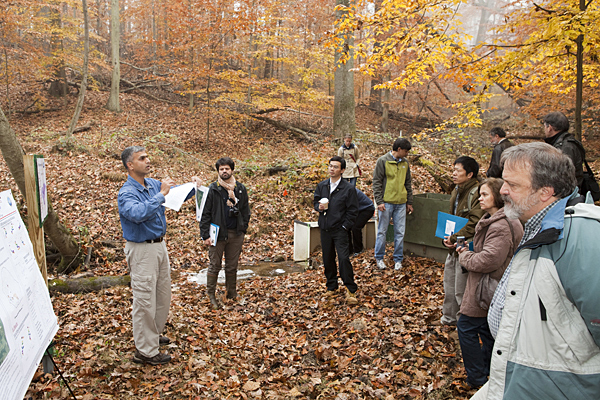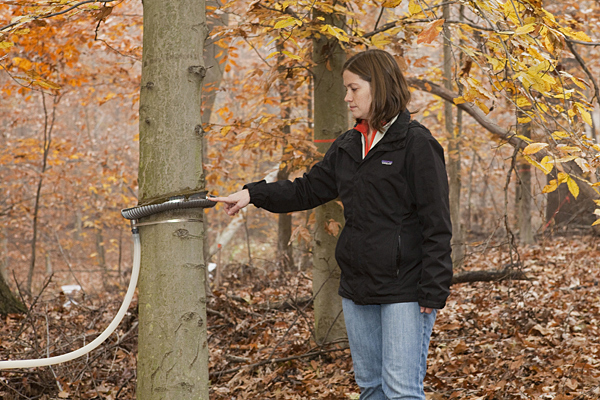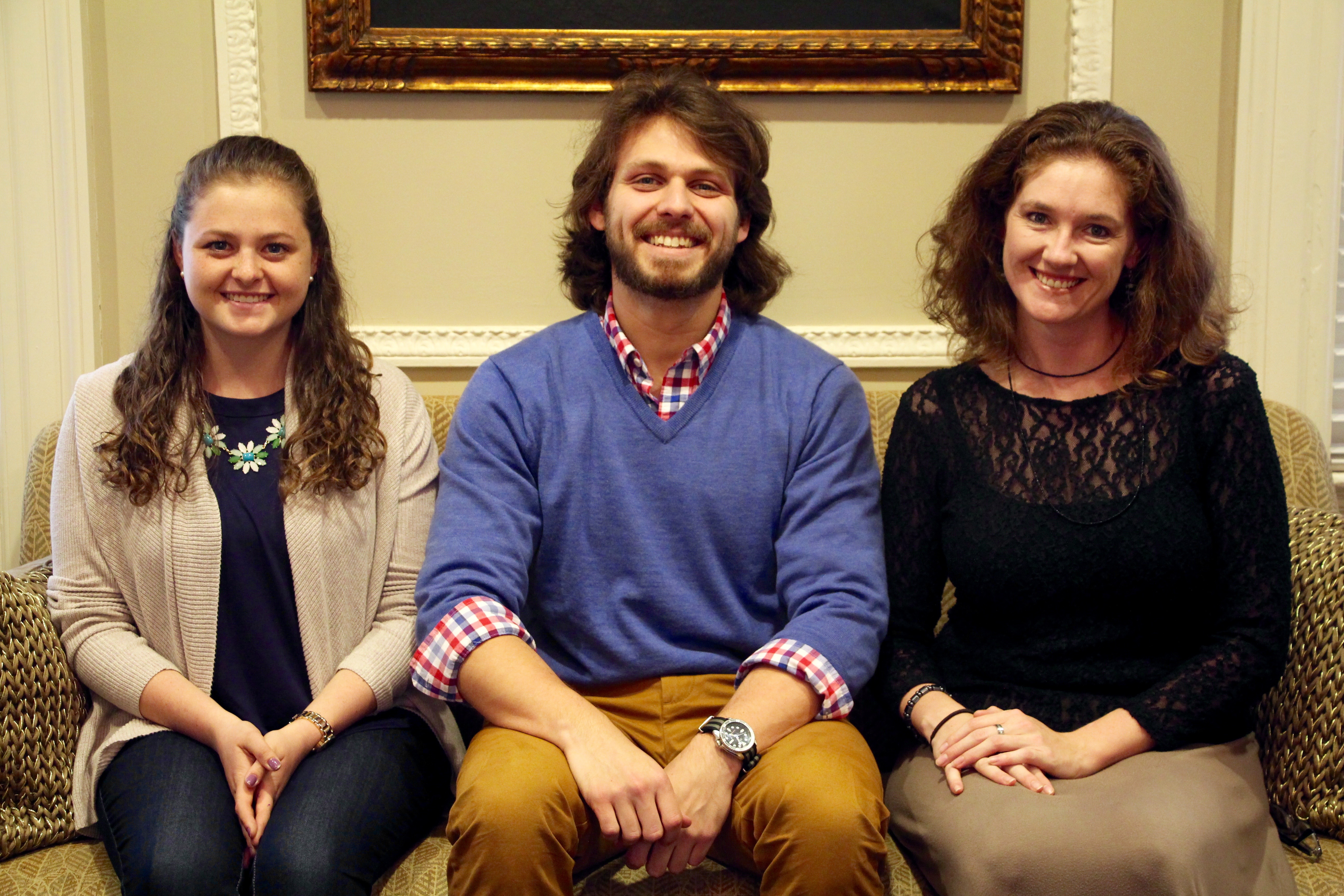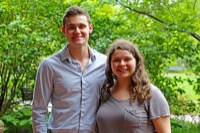A critical workshop
Landmark international workshop for critical zone scientists held at UD
9:29 a.m., Jan. 18, 2012--International collaboration in critical zone science took a giant step forward in November when about 80 researchers from the U.S., Europe, China and Australia gathered at the University of Delaware for a three-day workshop focused on planning future joint experiments.
The main goal of the workshop was to enhance cooperation and form a working network among the outdoor laboratories known as critical zone observatories (CZOs) that have been established around the world in the past decade. CZOs are natural areas, often defined by the boundaries of a watershed, in which scientists from a wide variety of disciplines measure and monitor environmental processes.
Global Stories
Fulbright awards
Peace Corps plans
“Nature doesn’t actually work by discipline,” said Enriqueta Barrera, coordinator of Critical Zone Observatory Sciences at the National Science Foundation (NSF). “Nature is much more complex, so that there is a connectivity or a coupling of biological, chemical, geological or physical processes.”
“Critical zone” is a relatively new scientific term coined in a 2001 report published by the U.S. National Academy of Sciences. It refers to the portion of the Earth’s surface extending from the bottom of the aquifers up through the treetops. It is the zone in which all life-sustaining processes occur, such as the cycling of nutrients across the boundaries between land, air and water.
There are currently six CZOs in the United States funded by NSF, but additional observatories are springing up around the world, including a growing number of sites funded by the European Commission and coordinated through the SoilTrEC (Soil Transformations in European Catchments) project, which co-sponsored the workshop. Scientists representing recently established CZOs in China and Australia also attended the meeting.
According to Steve Banwart, principal investigator for the SoilTrEC project, the CZO workshop at Delaware was “about being down in the trenches, sleeves rolled up, working really hard to sharpen science ideas and plan new research.”
Unlike more typical scientific meetings where individual researchers present the results of their recent projects to one another, the workshop involved two days of intense discussion in which small groups of scientists sought not only to clarify the research questions that need to be answered in the future but also to overcome the challenges that are inherent in large-scale international endeavors.
One of the most daunting challenges facing the group is the problem of data management and sharing. In order for the scientists to compare data from one CZO to another, experimental methods and data reporting formats must be standardized. Thousands of environmental sensors are recording data 24 hours a day in several dozen locations around the world, so the sheer amount of data is staggering.
On the final day of the workshop, the scientists headed into the field to tour the Christina River Basin CZO, the 565-square-mile watershed in southeastern Pennsylvania and Delaware which is being closely studied by researchers at the University of Delaware and the nonprofit Stroud Water Research Center in Avondale, Pa.
The Christina CZO team, led by Don Sparks of the University of Delaware and Lou Kaplan and Anthony Aufdenkampe of Stroud, had arranged stops on the tour that highlighted the various data collection methods and research projects under way in the watershed. Of the six American CZOs currently sponsored by NSF, the Christina CZO is the least “pristine,” with portions having been subjected to human influences for over 300 years.
The researchers are trying to determine how these human impacts have affected the carbon cycle in the watershed. For example, when soils are tilled for agricultural use, is the carbon stored in the soil released more quickly to the atmosphere? The answers to such questions could shed light on the larger issue of climate change due to the transfer of carbon dioxide, a greenhouse gas, to the atmosphere.
Scientists on the tour were able to return to their home countries with new ideas for environmental sensing equipment to help measure such important but tricky parameters as the amount of precipitation that drips to the ground from the tree canopy following a rainstorm or flows down the trunk of a tree. Such precise measurements serve to pull into tighter focus the picture scientists are forming of environmental processes.
One of the latest developments in environmental monitoring is the use of low-cost, open-source electronic components to build customized equipment. Until recently, scientists would need to hike out to a field site with a backpack full of bottles and return to the lab for days of analysis. New technologies hold the promise of enabling researchers to remotely collect data every few minutes or automatically fill bottles during precisely the right moments, which may occur at night or during big storms, through wireless activation, often controlled by a cell phone.
“The most important outcome from this meeting is there’s a clear consensus from all of these scientists from all of these countries around the world that we can do better science by working collectively,” said Banwart, who conducts soil science research at the University of Sheffield, United Kingdom.
According to Sparks, S. Hallock du Pont Chair of Soil and Environmental Chemistry at the University of Delaware, the weeks following the meeting have been full of activity: A joint international report is being prepared for the European Commission and NSF to summarize the workshop and plans for a another workshop are under way. The scientists are also working to construct an inventory of CZOs around the world.
Sparks points out that this is the second time that UD has hosted a major international meeting of scientists engaged in critical zone science. The first, held in the fall of 2005, resulted in the formation of the Critical Zone Exploration Network, a community of people and network of field sites that has been instrumental in developing the field of critical zone science.
One of the early leaders of CZEN, Sue Brantley of Penn State University, spoke at the recent workshop and summed up what CZO scientists are attempting to do by using the term “Earthcasting.”
“By measuring what is happening today and reading what happened yesterday,” she said, “we hope to project what will happen tomorrow.”
Article by Beth Chajes
Video by Meredith Chapman
Photos by Ambre Alexander












